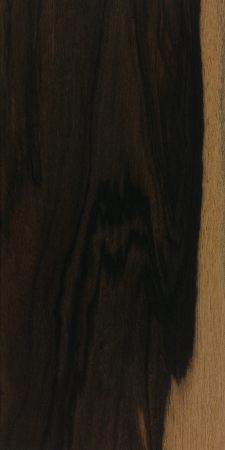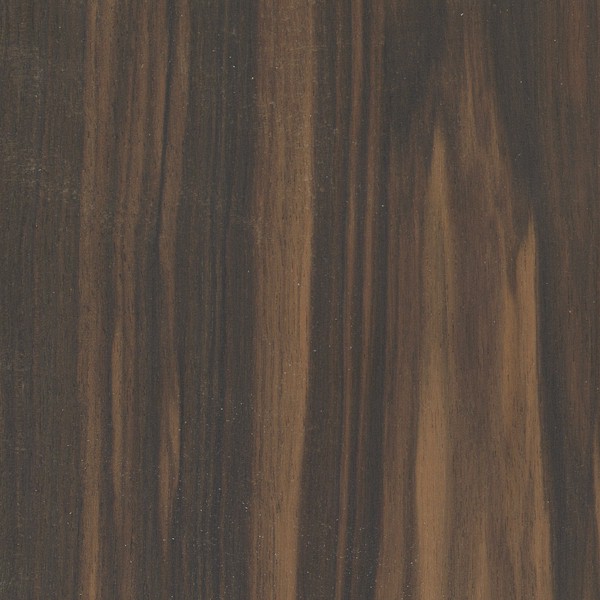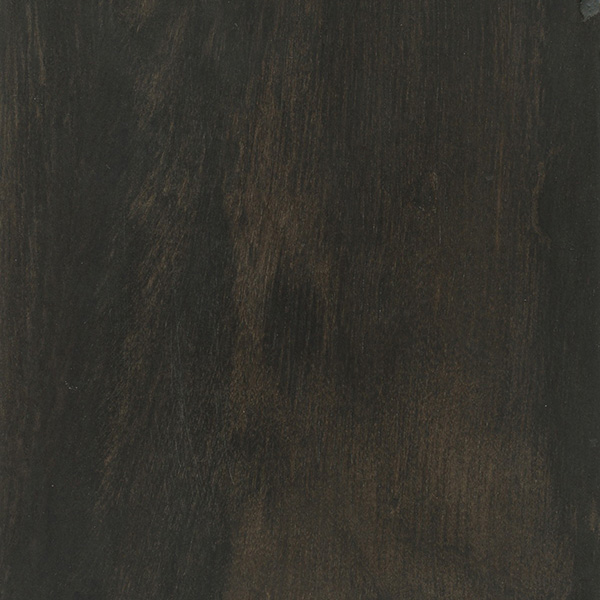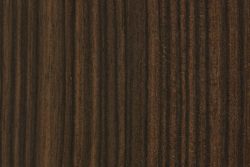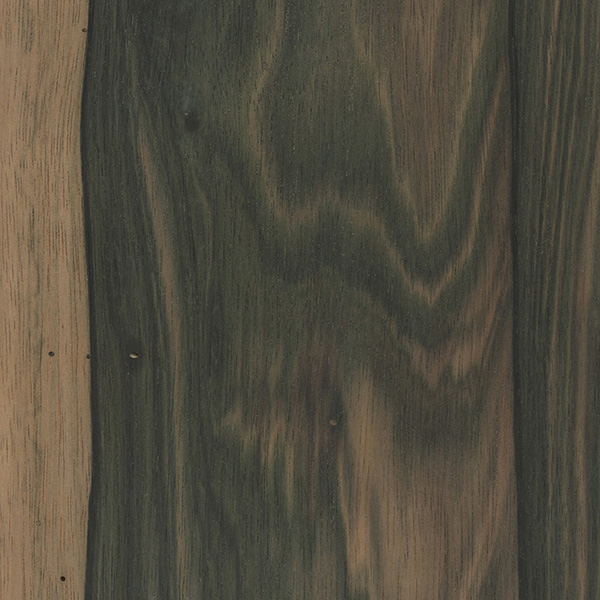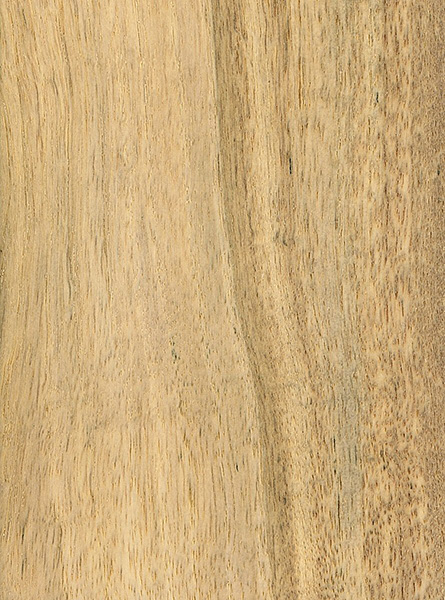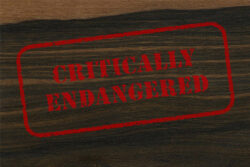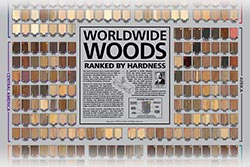Common Name(s): Ebony, persimmon
Distribution: Primarily in tropical regions worldwide; though ebony is from Africa and Asia
Genus Size: Nearly 800 species
Mechanical Characteristics: Dense and strong, with darker heartwood sections (not always present in logs) being even heavier and stronger than the sapwood.
Visual Characteristics: Most Diospyros wood is the pale sapwood. However, the highest grades of solid black ebony are collected from the central heartwood portion of logs. Streaked and striped ebony is also seen.
Identification: Ebony is diffuse porous (though persimmon species can be semi-ring-porous), typically with medium to large pores. Rays tend to be narrow and closely spaced, sometimes forming a reticulate pattern with the thin parenchyma bands.
Comments: Despite woodworkers’ more or less equating Diospyros with hard to find ebony, the trees in the genus are actually very widespread across the globe, with only a small fraction of the nearly 800 species in the genus yielding black heartwood. And of those species which do yield ebony, only a minority of individual trees tend to produce the deep and solid black coloration that’s so highly sought after.
Types of Ebony: Oftentimes it can be most helpful to simply group species of ebony together by common characteristics. While each individual species may have its own name (usually named directly after its source country or a nearby port), these names may not adequately convey the type of ebony.
Solid-black ebony
African
Gaboon ebony
Cameroon ebony
Madagascar ebony
Asian
Ceylon ebony
Coromandel ebony
Streaked or striped ebony
African
Asian
Macassar ebony
Malaysian blackwood
Pale ebony
Black and white ebony (Diospyros malabarica)
Non-black Diospyros (i.e., persimmon)
American persimmon (Diospyros virginiana)
Japanese persimmon (Diospyros kaki)
Related Content:

